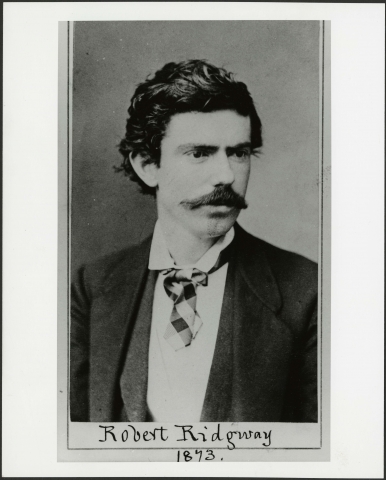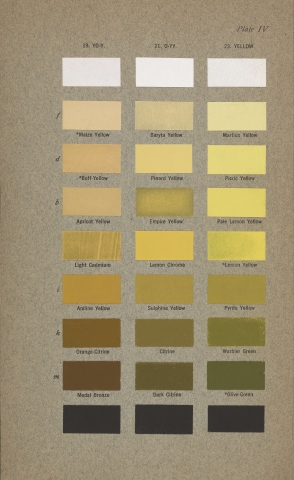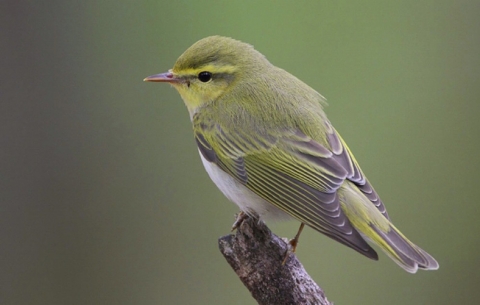Matching Color
Matching Color
![Richard Waller, “Tabula colorum physiologica …” [Table of physiological colors] Philosophical Transactions of the Royal Society of London, 1686](/sites/default/files/styles/large/public/39088018207936-1000-detail.jpg?itok=ntmj3_fV)
|
|
Richard Waller
“Tabula colorum physiologica …” [Table of physiological colors] Philosophical Transactions of the Royal Society of London, 1686 |
I say green; you say green. How do we know we’re talking about the same color?
Color charts, created as early as the 1600s, included color samples and names, providing a standard for others to follow. These charts helped naturalists to identify plants and animals and helped manufacturers to produce consistent dyes and paints.
The mass production of synthetic dyes in the 1800s demanded improved color-classification systems. A variety of color models and instruments were created; many are still in use today. However, color remains elusive to scientists and color experts, who have yet to discover a truly uniform color model.
![Richard Waller. “Tabula colorum physiologica …” [Table of physiological colors] Philosophical Transactions of the Royal Society of London, 1686](/sites/default/files/styles/panopoly_image_half/public/39088018207936-1000.jpg?itok=Yuf-WeK2)
|
|
Richard Waller
Tabula colorum physiologica … [Table of physiological colors] Philosophical Transactions of the Royal Society of London, 1686 |
This table is one of the earliest known color charts. Waller created it as a tool for describing plants and animals. Collectors and scientists could compare their specimens to this table and use the names provided to identify the colors of leaves, bark, flowers, feathers, plants, and animals.
![Wiener Farbenkabinet [Vienna color cabinet] Vienna; Prague: im Verlage der v. Schönfeldschen Handlung, 1794 Gift of Virginia Hamill Johnson](/sites/default/files/styles/large/public/39088002738714-0001.jpg?itok=fXFYr28I)
|
![Wiener Farbenkabinet [Vienna color cabinet] Vienna; Prague: im Verlage der v. Schönfeldschen Handlung, 1794 Gift of Virginia Hamill Johnson](/sites/default/files/styles/large/public/39088002738714-0003.jpg?itok=KP02wWMv)
|
![Wiener Farbenkabinet [Vienna color cabinet] Vienna; Prague: im Verlage der v. Schönfeldschen Handlung, 1794 Gift of Virginia Hamill Johnson](/sites/default/files/styles/large/public/39088002738714-0002.jpg?itok=ew6TgT3e)
|
|
Wiener Farbenkabinet [Vienna color cabinet]
Vienna; Prague: im Verlage der v. Schönfeldschen Handlung, 1794 Gift of Virginia Hamill Johnson |
||
One of only four known copies in the world, this early manual on the preparation of colors contains 2,592 hand-colored natural dye specimens, along with details on how to apply them to silk, cotton, wool, leather, wood, bone, paper, and other materials.

|

|
|
Robert Ridgway (1850–1929)
Smithsonian Institution Archives |
Milton Bradley (1836–1911)
Courtesy of Hasbro, Inc. |
Board game pioneer Milton Bradley (also a manufacturer of crayons and watercolors) was fascinated with finding a precise method for identifying and reproducing colors. Smithsonian ornithologist Robert Ridgway adopted Bradley’s color philosophy in his own work, devising a system for naming the colors of birds. Each made significant contributions to the standardization of colors.

|
||
|
Milton Bradley
Elementary Color Springfield, Mass.: Milton Bradley Co., 1895 Gift of Binney & Smith, Inc., makers of Crayola Crayons |
||
Bradley sought to educate adults and children about the physics and psychology of color. In his book Elementary Color he emphasized that color instruction for children should employ a simple naming system.
He promoted his color wheel as a device that could scientifically match and measure colors. When spun rapidly, overlapping colored disks mix colors before your eyes. Different combinations of disks create a multitude of hues based on measured proportions.

|

|

|

|

|
|
|
Emily Noyes Vanderpoel
Color Problems: A Practical Manual for the Lay Student of Color New York: Longmans, Green, 1903 Gift of Mr. and Mrs. G. Glen Gould |
||
These illustrations from Color Problems: A Practical Manual for the Lay Student of Color demonstrate the principles of mixing colors using the Bradley color wheel. Spinning these color combinations (in the proportions shown) produces the gray shade in the center square. The center also shows the proportions of black and white needed to achieve the same results. (Surprise! Gray is not always an issue of black and white!)

|
|
Robert Ridgway
Color Standards and Color Nomenclature Washington, D.C.: Published by the author, 1912 |
Ridgway, the Smithsonian’s first curator of birds, used color as a tool to help identify bird species. Unsatisfied with existing color standards, he created his own color dictionary for naturalists in 1886. His expanded edition of 1912 contains 1,115 named colors. Some names directly refer to bird species. Look for “Warbler green” on this chart.
Leaf-warblers, a species found mostly in Europe, Asia, and Africa, come in many leaf-like colors. Do these warblers match the “Warbler green” on Ridgway’s chart?

|
|
Phylloscopus olivaceus / Philippine Leaf-warblers
National Museum of Natural History, Birds Division |
![Albert Henry Munsell, Atlas of the Munsell Color System [Malden, Mass.: Wadsworth, Howland & Co., Inc., Printers, ca. 1915] Gift of Binney & Smith, Inc., makers of Crayola Crayons](/sites/default/files/styles/large/public/39088002718880-0015.jpg?itok=8u7m1MgA)
|
![Albert Henry Munsell, Atlas of the Munsell Color System [Malden, Mass.: Wadsworth, Howland & Co., Inc., Printers, ca. 1915] Gift of Binney & Smith, Inc., makers of Crayola Crayons](/sites/default/files/styles/large/public/39088002718880-0021.jpg?itok=M637725j)
|
![Albert Henry Munsell, Atlas of the Munsell Color System [Malden, Mass.: Wadsworth, Howland & Co., Inc., Printers, ca. 1915] Gift of Binney & Smith, Inc., makers of Crayola Crayons](/sites/default/files/styles/large/public/39088002718880-0019.jpg?itok=KuHl41oZ)
|
![Albert Henry Munsell, Atlas of the Munsell Color System [Malden, Mass.: Wadsworth, Howland & Co., Inc., Printers, ca. 1915] Gift of Binney & Smith, Inc., makers of Crayola Crayons](/sites/default/files/styles/large/public/39088002718880-0017.jpg?itok=VXXo8gmP)
|
|
Albert Henry Munsell
Atlas of the Munsell Color System [Malden, Mass.: Wadsworth, Howland & Co., Inc., Printers, ca. 1915] Gift of Binney & Smith, Inc., makers of Crayola Crayons |
|
Albert Munsell was an American painter, teacher of art, and inventor of the Munsell color system. Using numbers to identify colors (Munsell disliked “foolish” color names), the Munsell system continues to influence color theory and practice today.
